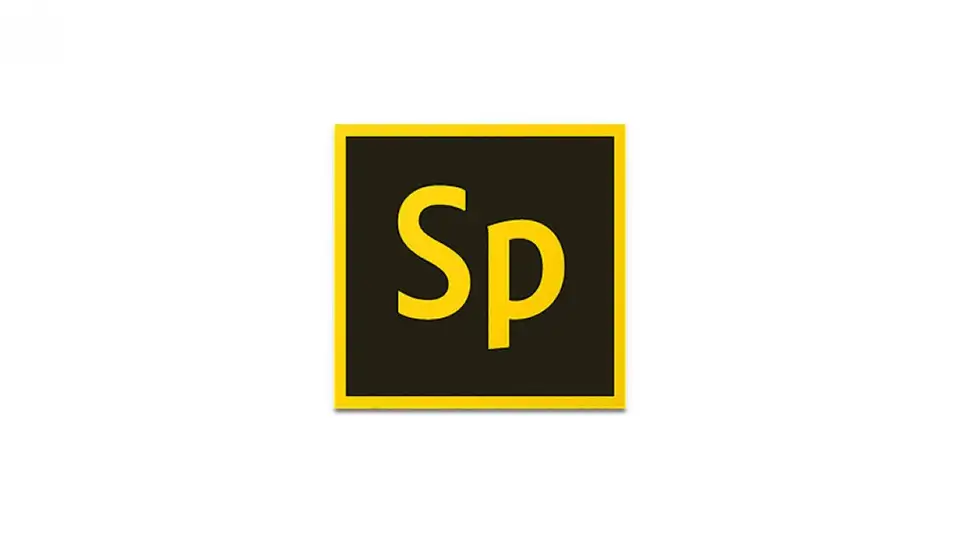We all love to tell stories, let's say we tell 6 stories a day. That means 42 stories a week, and 2,184 stories a year!
But have you ever been asked to tell a short story about yourself and found yourself at a loss for words?
Whether it's for a job interview, a networking event, or a social gathering, telling a short story about yourself can be a powerful tool to connect with others and leave a lasting impression.
However, telling a short story about yourself is not just about sharing facts and figures, but also about conveying a message that resonates with your audience. It's about building rapport with your listeners and inspiring them to take action.
In this article, we'll share with you some tips and tricks on how to tell a compelling, memorable, and authentic short story about yourself.
Key Points
- Identifying your message and audience is the first step in crafting a compelling narrative.
- Emphasizing key moments in your life story can engage the emotions of your audience, making your story more relevant and memorable.
- Structure your story in a way that captures the audience's attention, starting with a hook that intrigues them and creates curiosity.
- Deliver your story with confidence, maintain eye contact, use body language and gestures, and project your voice to keep the listeners engaged.
Identify Your Message and Audience
Now, you need to figure out who you want to reach and what you want to convey to them. Crafting a compelling narrative begins with identifying your message and audience.
Who are you speaking to Is it a group of friends at a party, prospective employers in an interview, or someone you've just met on a first date Knowing your audience will help you tailor your tone and language to effectively communicate your message.
Once you've identified your audience, you need to determine your message. What do you want to convey Is it your personal experiences that shape who you are today Are there lessons you've learned that can benefit others Whatever your message, make sure it's clear and concise.
Adapting your tone to your audience will help you connect with them and make your story more engaging and relevant. Remember, the key to successful storytelling about yourself is to keep it interesting and relevant.
Choose the Right Details
When choosing the right details for your story, it's important to highlight relevant key moments that align with your message and audience. Use descriptive language to paint a vivid picture in their minds and bring your story to life.
Avoid irrelevant information that could distract from the main message and focus on what's important. By following this guideline, you can create a compelling and captivating story that resonates with your listeners.
Highlight Key Moments
Emphasizing key moments in your life story can engage the emotions of your audience, making your story more relevant and memorable. These key moments can be anything from life-changing decisions to significant achievements or even challenging obstacles you've overcome.
It's important to remember that the emotional impact of these moments will resonate with your audience, so be sure to highlight them with detail and emphasis. When highlighting these key moments, pacing is crucial. You certainly don't want to rush through them, but you also don't want to dwell on them too long.
Your story should flow naturally, with each key moment building on the last. It's also important to maintain the authenticity of your story. While selective memory can be useful in crafting a compelling narrative, be sure to stay true to the facts and emotions you experienced during these key moments.
By emphasizing your key moments with emotional impact, pacing, and authenticity, your story is sure to captivate and inspire your audience.
Use Descriptive Language
Using descriptive language can truly help your audience imagine the key moments in your story, making it stronger and more engaging. By using sensory details, you can provide a clear picture in the minds of your audience, making them feel like they're right there with you.
For example, instead of simply saying, "I was nervous," you could describe the feeling as "my heart was pounding so hard I could feel it in my throat, and my palms were sweaty." This not only engages the emotions of the audience but also helps them connect with you on a deeper level.
Another way to use descriptive language is by setting the scene. By describing the environment around you, you can transport your audience to that moment.
For example, if you're telling a story about a camping trip, you could describe the scent of the campfire, the sound of crickets chirping, and the cool sensation of the night air on your skin. This level of detail not only makes your story more interesting but also helps the audience feel like they're experiencing the moment with you.
So, don't be afraid to use descriptive language to bring your story to life!
Avoid Irrelevant Information
To keep your story engaging and focused, it's important to avoid irrelevant information. As you tell your story, you may be tempted to stray into tangents that might seem interesting but ultimately detract from the core of the story.
Instead, make sure to carefully edit your story and remove unnecessary details that don't contribute to the overall narrative. One way to do this is by asking yourself, "Does this detail add to the story or does it distract from it?" If it doesn't contribute to the main plot, it's best to leave it out.
By doing this, you'll be able to keep your audience engaged and invested in the story you're telling. Remember, the importance of editing cannot be overstated when telling a short story about yourself.
Structure Your Story
When you tell a story about yourself, it's important to structure it in a way that captures your audience's attention. Start with a hook that grabs them and piques their curiosity.
From there, create a clear beginning, middle, and end that takes them on a journey through your story. Use transitions to connect your ideas and make the story flow smoothly.
With a well-structured story, you'll be able to leave a lasting impression on your audience.
Start With a Hook
Engaging your audience from the start can greatly enhance the impact of your personal story, so why not start with something intriguing
Creating an engaging opening is key to capturing your audience's attention and keeping them interested in your story. One effective way to do this is by using humor. If you can make your audience laugh, you've already won half the battle. Don't be afraid to be a little unconventional with your opening. You want to stand out from the rest and make your story memorable. Consider starting with a surprising fact or statistic, a bold statement, or a thought-provoking question that intrigues your audience. Whatever you choose, just make sure it's relevant to your story and sets the tone for your narrative. Remember, you only have a few seconds to capture your audience's attention, so make the most of it!
Create a Clear Beginning, Middle, and End
It's important to map out the beginning, middle, and end of your personal narrative clearly so that the audience can easily follow the storyline and understand the deeper meaning behind it.
To create a compelling beginning, try applying the following tips:
- Start with a question or surprising statement that will pique your audience's curiosity.
- Set the scene by describing the setting and characters involved in your story.
- Use sensory details to paint a vivid picture in your audience's minds.
- Show, don't tell. Use dialogue and action to draw your audience into the story.
Next, to create a satisfying ending, consider the following tips:
- Resolve any unanswered questions or unresolved conflicts introduced at the beginning of your story.
- Provide closure by reflecting on how your story has impacted you and what you've learned from it.
- Leave a lasting impression on your audience by ending with a powerful statement or image.
- Consider adding a call to action, encouraging your audience to take action based on the message of your story.
By following these tips, you can create a personal narrative that engages your audience from beginning to end and leaves a lasting impact.
Use Transitions to Connect Ideas
Using transitions to connect ideas is crucial in creating a smooth flow throughout your personal narrative. Without proper transitions, your story may appear disjointed and confusing.
There are several types of transitions you can use to connect your ideas, such as chronological transitions, cause and effect transitions, as well as comparison and contrast transitions.
Chronological transitions are useful when you want to tell your story in a linear fashion, moving from one event to the next in a clear and chronological order. Cause and effect transitions can help you explain the reasons behind certain events or actions, while comparison and contrast transitions can be used to show the differences or similarities between various parts of your story.
By using a combination of these types of transitions, you can create a seamless and cohesive flow throughout your narrative. Don't be afraid to experiment with different transition techniques to find the ones that best suit your story.
Practice and Perfect
With consistent practice and refinement, you'll soon be able to tell a story about yourself that truly resonates with your audience. Storytelling practice doesn't have to be a daunting task.
Start by telling your story to friends and family and ask for their feedback. Self-reflection is also key. Take the time to think about what makes your story unique and what emotions you want to convey.
As you continue to practice, pay attention to the pacing of your story. Are there parts that drag on too long or could be condensed Are there moments that could be emphasized further Perfect your story by removing unnecessary details and adding clearer descriptions.
Remember, the goal is to engage and captivate your audience, so focus on making your story entertaining and meaningful. With enough practice and refinement, you'll be able to confidently share your story with anyone willing to listen.
Deliver Your Story With Confidence
When delivering your story, it's important to maintain eye contact with your audience to build a connection and keep them engaged.
Using body language and gestures can also enhance your delivery and help convey your emotions and message.
Don't forget to speak clearly and audibly, so that your story can be heard and understood by everyone in the room.
By following the following tips, you will be able to share your story confidently and leave a lasting impression on your listeners.
Maintain Eye Contact
As you share your story, look into the eyes of your listeners like a skilled archer aiming at the target. Maintaining eye contact is a powerful tool that can help you connect with the audience and convey the emotions behind your words. It shows that you are confident, authentic, and fully invested in your story.
When you make eye contact, you create a sense of intimacy and trust that goes beyond words. You invite the listener into your world and make them feel like a part of the experience. It also helps you gauge their reactions and adjust your delivery accordingly.
So, the next time you share a story, remember to maintain eye contact and let your emotions shine through. You'll be amazed at the impact it has on your audience.
Use Gestures and Body Language
Using body language and gestures will help you bring your story to life, allowing the audience to visualize the scenes and emotions you describe.
Facial expressions, such as raising your eyebrows or smiling, can help you convey the tone of your story. For example, if you're telling a funny anecdote, you can use a wide smile or a small laugh to emphasize the humorous aspect of the story. Conversely, if you're telling a sad story, you can use a more somber expression to convey emotion.
Incorporating props can also help you tell your story in a more engaging way. For example, if you're telling a story about a vacation, you can show pictures of the places you visited or souvenirs you bought. This will allow your audience to visualize the setting better and immerse themselves in the story.
Additionally, using hand gestures can help you emphasize certain points or actions in your story. For example, if you're describing a car accident, you can use your hands to mimic the sound of the crash or to show how the cars collided.
Overall, using body language and gestures can help you make your story more dynamic and engaging for your audience.
Speak Clearly and Be Audible
To truly captivate your audience, it's important to speak clearly and audibly, ensuring that every word is heard and understood. When telling a short story about yourself, speaking confidently and projecting your voice is key to keeping the listeners engaged.
Start by taking deep breaths and centering yourself, then speak with confidence and purpose. Remember that the tone of your voice can convey emotions and help the audience connect with your story. Use inflection to emphasize key points and vary your tone to add interest. Don't be afraid to speak up and project your voice, especially if you're speaking in a large or noisy environment. By doing so, you'll ensure that the audience can hear every word of your story and fully engage with your experience.
Conclusion
Remember, identifying your message and audience is key to crafting a successful story. Choose the right details to support your message and engage your audience.
To illustrate how these tips can be applied in real life, consider the following example. Imagine you're a job candidate interviewing for a position at a nonprofit organization.
During the interview, you're asked to share a short story about yourself that demonstrates your passion for social justice. You choose to tell about your experience volunteering at a local food bank, where you witnessed firsthand the impact of poverty on families in your community.
By following the tips outlined in this article, you can craft a compelling personal narrative that showcases your values and experiences, resonating with your audience and leaving a lasting impression.
Whether it's for a job interview, networking event, or social gathering, mastering the art of telling a short story about yourself can be a powerful tool for connecting with others and making a memorable impression.
So, go ahead and share your story with confidence, knowing that you have the skills to captivate any audience and leave a lasting impact.
If you need further assistance or have any more questions, feel free to ask!
 Indonesia
Indonesia 









